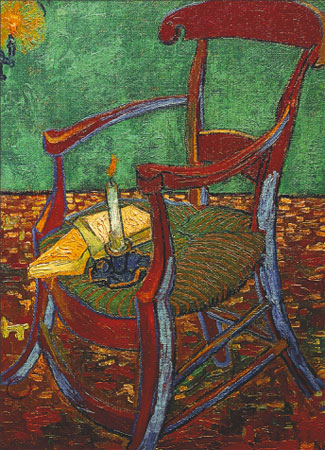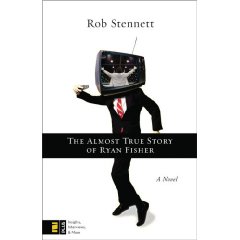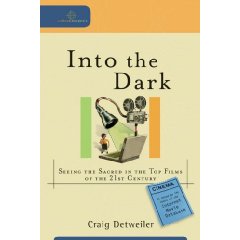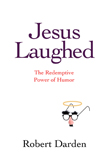 I’ve had a bit of writer’s block these days, but not “reader’s block”…I’ve got a dozen books that I’m in the middle of or have recently finished. Besides the Big and Important ones that I announce here–scroll back over the last week if you don’t recall— and some that I am prayerfully reading devotionally, there are smaller, eccentric little volumes that keep me up and smiling late lately, bringing much interest and joy. Eat, Pray, Love: One Woman’s Search for Everything Across Italy, India and Indonesia by Elizabeth Gilbert (Penguin; $15.00) is surely one of the most well-written and delightfully fascinating books I’ve read in a while (despite, or it is partially because of, her esoteric spirituality and frank descriptions of her libido.) As you may know, since you mostly likely have talked to somebody who has been insisting you read it, EPL is the well-realized memoir of a respected fiction writer who, after a heartbreaking divorce, spends four months in Italy mostly eating, four months in an ashram in India, and then four months in Bali. Sensuous and funny passages tell of her year long journey to discover important things about herself and life in the universe. Please don’t misunderstand, thinking this is written out of evangelical piety, as it isn’t. There is a lovely Anne Lamott quote on the front, but this is beyond her ways, even. I still found it to be one of the best and most enjoyable books I’ve read this year! I’d like this woman as a friend, or even a writing mentor, and can’t wait for the sequel in ’09…
I’ve had a bit of writer’s block these days, but not “reader’s block”…I’ve got a dozen books that I’m in the middle of or have recently finished. Besides the Big and Important ones that I announce here–scroll back over the last week if you don’t recall— and some that I am prayerfully reading devotionally, there are smaller, eccentric little volumes that keep me up and smiling late lately, bringing much interest and joy. Eat, Pray, Love: One Woman’s Search for Everything Across Italy, India and Indonesia by Elizabeth Gilbert (Penguin; $15.00) is surely one of the most well-written and delightfully fascinating books I’ve read in a while (despite, or it is partially because of, her esoteric spirituality and frank descriptions of her libido.) As you may know, since you mostly likely have talked to somebody who has been insisting you read it, EPL is the well-realized memoir of a respected fiction writer who, after a heartbreaking divorce, spends four months in Italy mostly eating, four months in an ashram in India, and then four months in Bali. Sensuous and funny passages tell of her year long journey to discover important things about herself and life in the universe. Please don’t misunderstand, thinking this is written out of evangelical piety, as it isn’t. There is a lovely Anne Lamott quote on the front, but this is beyond her ways, even. I still found it to be one of the best and most enjoyable books I’ve read this year! I’d like this woman as a friend, or even a writing mentor, and can’t wait for the sequel in ’09…
Lost in the Museum: Buried Treasures and the Stories They Tell by Nancy Moses (AltaMira; $22.95) is a fun history book, inspired by the stuff in the back rooms of museums, artifacts that aren’t seen by the general public. It recounts the stories of the difficulties of curating museums, and preserving the vast amount of stuff; the author’s first-hand experiences (she was the former director of the Atwater Kent Museum of Philadelphia) are gloriously shared so we can all be “insiders” who know what is really going on behind the well lit cases. Who knew how it all works, and how much untold/unshown stuff there is? And how much of it is Really Cool. Excursions to see John Audubon’s birds (at the Academy of Natural Sciences), to weirdo glowing Blaschka sea animals at the Carnegie Museums of Pittsburgh, in a story about a biology/art interface) to John Brown’s pike (!) held at the Civil War and Underground Railroad Museum in Philly and to pessaries (look it up!) at the famous morbid Mutter Medical Museum are just a few of the chapters here. This is an eccentric and rather random way to learn, but the back-rooms-at-the-museum structure ties the stories together.
I’ve been reading through a more serious history, too, with one chapter to go, written by a stellar and renowned conservative social thinker, Allan Carlson. Carlson directs the Howard Center for Family, Religion and Society, and has given us a brilliant bit of social history called The “American Way”: Family and Community in the Shaping of the American Identity (ISI Books; $15.) What important stuff to know. I had no idea that there were protests against German-American’s using hypens in their ethnic designations in the early 1900s (indeed, the Democratic Party declared in their 1916 convention that it was “the supreme issue of our day” and the nature of national unity created a near civil war. Who knew (but the radical feminists who despise it) that the New Deal of Roosevelt had such a traditional view of women working at home. (Maternalists fought for anti-industry child labor laws will feminists and unionists opposed such decent proposals.) The chapter on the famous Luce publishing empire was fascinating–I had no idea that Paul Tillich or Neihbur or John Courtney Murray or Evelyn Waugh had written for them. He started Sports Illustrated because of his vision of how American’s should care about baseball and several suburban living magazines because of his hope that this would strengthen the wholesome family (ahhh–how wrong he was, eh?) How the American Dream was portrayed during the Cold War years is insightfully told in the next chapter as the argument unfolds that much bolder measures of cultural reformation are needed if we are going to create a society that is community and family-friendly.
 Still, this summer season is a time for even lighter fare, and I’ve started a novel called The Almost True Story of Ryan Fisher by Rob Stennett (Zondervan; $12.99.) It is about a self-assured real estate agent who discovers a Christian business directory and places an ad complete with a Jesus fish, thinking he can, by pretending to be an evangelical, make a mint. As the back cover puts it, “While watching a news special late one night, he sees evangelical Christians raising their hands in worship. It’s like they’re begging for affordable but classy starter homes.” How many books published in the CBA world have a Kurt Vonnegut epigram in the front?
Still, this summer season is a time for even lighter fare, and I’ve started a novel called The Almost True Story of Ryan Fisher by Rob Stennett (Zondervan; $12.99.) It is about a self-assured real estate agent who discovers a Christian business directory and places an ad complete with a Jesus fish, thinking he can, by pretending to be an evangelical, make a mint. As the back cover puts it, “While watching a news special late one night, he sees evangelical Christians raising their hands in worship. It’s like they’re begging for affordable but classy starter homes.” How many books published in the CBA world have a Kurt Vonnegut epigram in the front?
I think this is going to be very, very funny.
The Almost True Story of Ryan Fisher is the second sort of edgy, funny and ironic bit of pomo fiction that Zondervan has released, the other being My Name Is Russel Fink by Michael Snyder, which is the story of a twenty-something copier salesman who lives with his mom, dates an actress, hates his job, and has a clairvoyant basset hound named Sonny that is murdered. Christian fiction ain’t what it used to be, I can tell ya that…
Stories, either rich and lovely memoirs, history (either told specifically around certain artifacts or told grandly around broad social themes) or novels, are, it is often said, what makes us tick. We love stories, we read the Bible as a Story, we allow our lives to unfold as stories. Even newer books on evangelism are about story theology and inviting folks into the Story of God. Even jokes can illustrate how we all love a good story. And then there’s movies, the chief medium for storytelling in our time.
 Which brings me to a very great summer read, a fun and well written book of stories, which, to be honest, deserves to be announced as a BookNotes Really Important Book. Craig Detweiler has just released a substantial and refreshing new book on movies entitled Into the Dark: Seeing the Sacred in the Top Films of the 21st Century (Baker Academic; $18.99.) It is in the fabulous series about which we’ve raved here before, a series called “cultural exegesis.” It is a very enjoyable book, very smart and, as much as I hate to break my lite summer tone here, is truly a very helpful contribution to our formation of the Christian mind, and a Christian assessment of the current contemporary context. (Preachers, pastors, teachers, parents, are you listening?) He has, as
Which brings me to a very great summer read, a fun and well written book of stories, which, to be honest, deserves to be announced as a BookNotes Really Important Book. Craig Detweiler has just released a substantial and refreshing new book on movies entitled Into the Dark: Seeing the Sacred in the Top Films of the 21st Century (Baker Academic; $18.99.) It is in the fabulous series about which we’ve raved here before, a series called “cultural exegesis.” It is a very enjoyable book, very smart and, as much as I hate to break my lite summer tone here, is truly a very helpful contribution to our formation of the Christian mind, and a Christian assessment of the current contemporary context. (Preachers, pastors, teachers, parents, are you listening?) He has, as
the subtitle says, chosen arguably the most important films of our times and grouped them around themes, allowing God to speak in even the fiercest and funniest. His methodology included studying the IMDb, the Internet Movie Database, to select the most influential contemporary films.
Detweiler dissects 45 films, from Little Miss Sunshine to Million Dollar Baby, from Shrek and The Incredibles to Big Fish and V for Vendetta. Some of the biggest sections explore issues of identity (in Memento and Eternal Sunshine of the Spotless Mind), community (in films like Crash and Talk to Her) and hstory (Finding Neverland and Spirited Away.) His insights are nearly brilliant at times and a wide array of Christian film critics and Hollywood workers have raved about it. Although he is deeply theological (his PhD is from Fuller) he is very open-minded and positive about the common grace of these popular and influential stories.
Dick Staub, host of the fabulous The Kindlings Muse, author of the wonderful The Culturally Savvy Christian, writes about Craig and his new book,
Soak a brain in billions of digital bytes of filmic splendor and an equal amount of dynamic theology, awaken it to the ‘sudden and miraculous grace’ available at the intersection of faith and film, and you’ve got Craig Detweiler’s tour de force. A brilliant, timely, and useful piece of work…
So, summer is a time to rent some movies, think and talk about them, maybe read some books about film, stories, or leisure. Craig Detweiler’s bit of “reel revelation” is a great addition to any library on the interface of film and faith, and a very mature guide to your movie viewing enjoyment.
And, lastly, speaking again of enjoyment this summer: check out Jesus Laughed: The  Redemptive Power of Humor Robert Darden (Abingdon; $16.00.) I know I’ve written too much in this post and can only hope somebody has scrolled down here to the bottom and will see this. This is a winner—one of the only books about the theology of humor (there are a few, I hope you know) that is, uh, actually funny. Robert Darden is the Senior Editor of The Wittenburg Door, if that gives you a clue. Come on, people, how cool is this?
Redemptive Power of Humor Robert Darden (Abingdon; $16.00.) I know I’ve written too much in this post and can only hope somebody has scrolled down here to the bottom and will see this. This is a winner—one of the only books about the theology of humor (there are a few, I hope you know) that is, uh, actually funny. Robert Darden is the Senior Editor of The Wittenburg Door, if that gives you a clue. Come on, people, how cool is this?
Tell me that you’re going to mail one to the grumpiest person you know and I’ll give you an extra discount. Heee,heeee. Subversive humor. Mirth abounds, in all kinds of stories. Enjoy.
The painting above is Paul Gauguin’s Chair With Books and Candle by Vincent Van Gogh, painted in 1888. I don’t use a candle, unless I have to.

Thank you, Byron, for your reading list! What fun! I appreciate the glimpse into your broad interests.
Thanks especially for your review of Eat Pray Love. My reading friends are divided evenly between those who claim Gilbert is narcissistic and those who scoff “absolutely not!” I’ve not read it but now I’ll be more likely to do so.
I’m still waiting to open “Bewildered Travel,” possibly while I am in airports (appropo) next week. Meanwhile Madeleine just finished L’Engle’s Time Trilogy (imagine me watching her devour A Swiftly Tilting Planet from across the room, one of my top five favorite books of all time) and I found myself stealing the second Harry Potter from her reading pile, avoiding Augustine for a few hours. Scott also left The New Yorker open to the article on “the new evangelicals,” interesting piece.
Guess what? I must go READ…